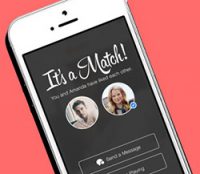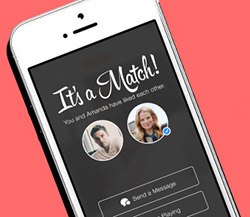 By Jaden Lux–All seems to be calm in the quiet neighborhood positioned near the cross hairs of South Nicollet Street and Glenn Avenue one Saturday night. That is, except the small groups of drunken college students that scurry into a small white house overlooking the street corner.
By Jaden Lux–All seems to be calm in the quiet neighborhood positioned near the cross hairs of South Nicollet Street and Glenn Avenue one Saturday night. That is, except the small groups of drunken college students that scurry into a small white house overlooking the street corner.
As the students enter through the rotting doorframe covered with a spot of paint here and there, a wall of blaring music, smoke, and a strong alcoholic odour hits the silence.
The number of people within the initial room grew by the minute, as James Oden, a senior at Morningside, casually leaned against a wall within the house. As we sat discussing this recent party scene in a much less dramatic setting, Oden described, in detail, how it looked.
“On a couch there were a few girls sitting, taking pictures on their phones, and sharing a large bottle of alcohol,” he starts. Oden found them to be fairly attractive and so the detail of the event flowed effortlessly from the partier as he continued.
“The dating scene is terrible at parties here to be honest. Everyone is standing around. Everyone is shoulder to shoulder. I try to talk to one of the girls and three other dudes, I guess, are talking to her too,” Oden adds with irritation building in his voice.
It turns out Oden actually knew this specific girl after matching with her on the dating app Tinder and messaging her. The two carried on a conversation throughout the week leading up to the party, but when it came for an actual physical interaction, neither was able to interact in the way they were while using the social media app.
The App Reality
Sadly this has become the reality for many college students looking for relationships. What is known as one of the greatest creations in the world, social media is actually causing a number of problems with young adults when it’s time for them to interact in the physical world. While many wonder how constant interaction can actually hinder communication among possible mates, students on campus can easily see why.
Dominique Swanson, a senior Corporate Communications major, sits nonchalantly in a booth looking out to the other students eating in the cafeteria while she sips on coffee. “I could write a book on today’s relationships,” Swanson comments to me immediately. She undoubtedly knows why college students turn to alcohol when attempting to meet new people.
“Alcohol loosens your inhibitions. They think they need this to meet people, but in reality they aren’t strong willed enough to do something without it,” Swanson states.
She takes a moment to take a long drink from her coffee cup before continuing. “When they drink, they have an excuse. College kids think it’s their right to drink so it’s something that would be hard to fix.”
Garrett Wall, a senior at Morningside, completely agrees with Swanson. In a quick meeting in the HJF Learning Center Wall explained, “Alcohol lets people do things they normally wouldn’t do. They use alcohol to justify what they know is wrong for them to do.”
No substitute for critical thinking
Swanson and Wall have a good point that has quiet a bit of research to back it up. According to a statistic given by Forbes Magazine, 93 percent of communication is picked up nonverbally when speaking to someone. Things such as body language, inflection, and vocal tone are all signs and signals to a person subconsciously. When students are spending the majority of their time communicating through text messaging, Facebook, and Twitter, how would they be able to practice communication skills in person?
What’s worse is the content that many social media sites hold within. According to Covenant Eyes, 63 percent of men 18 to 30 say they watch pornography several times a week, while 76 percent of women in the same age range say they watch it at least once a month. The fact that millennials have such easy and quick access to material such as pornographic content may be a factor that is causing change in the dating culture.
Rev. Kathy Martin, an Ordained Minister for the United Methodist Church and current campus minister, had some words concerning the use of social media for this purpose.
“Anything electronic is retrievable. There’s a critical thinking component that college tries to teach you because we don’t all come with that ability. Participating in this kind of stuff can really cause you some problems down the road,” Martin stresses.
Lowering standards
Graphic content on social media is just one factor, look no further than the smart phone for another set of factors drawing college students into lowering their dating standards.
Within the last ten years, smart phone apps such as Tinder, Grindr, Hook-Up Now, Zoosk, and hundreds more have been added to app stores. All of these apps are used solely for the purpose of meeting people quickly, and usually for hooking-up. These apps are free and can be downloaded in under a minute.
Martin can easily see the downside to this hook-up apps by saying, “It’s risky. If you participate in this, you have to know from the get go that there are certain risks in meeting someone that way. If you have no background in that person, it doesn’t sound safe. Safety is a huge issue in these situations.”
But that isn’t to say that there aren’t benefits to finding a potential match through online dating. Martin believes there is the possibility for a successful relationship if it is used correctly.
“That’s not to say it can’t happen though social media. I did a wedding yesterday that the couple had met through Match.com. They were busy in their careers; they weren’t people that went out to bars; they had not met anyone through their every day traveling. I think some of those relationships are very successful,” Martin said.
On the contrary, one Morningside student, Kris O’Neil, can see the negative impact on college students even on Morningside’s campus. “The guys like the chase and the girls like the attention, and at the end of it all they are afraid of the commitment. There are only a couple people on campus with actual, strong relationships,” O’Neil said.
Tinder and other quick-meeting dating apps aren’t only lowering dating values, but they are creating a sense of unlimited options for possible mates, a mindset that many students as a problem.
Unlimited options
With this quick dating apps, the ability to find hundreds of possible matches is as easy as swiping right. Swanson sees this problem looming. “The problem with our generation is the luxury of choice. That is something that is unique to us. We have all these options available to us. How are we supposed to know what we want, when we are given the world?” Swanson inquires.
Not only was Swanson passionate about this generational problem, but across the board, students that were interviewed all had a similar agreement to this issue.
Oden give his input on the situation after contemplating his use of hook-up apps. “I got to college and my options grew a lot, since I came from a small school. You see people complain because they look for the ‘perfect’ relationships now that they are able to see endless possibilities online.” Wall adds to the discussion by saying, “People have sex without being in a relationship in college because they don’t want to commit.”
It seems more options is not always a better thing to college students.
“I look at a guy and he seems cool, but there’s this one thing that I don’t like about him so I’m going to look for another that doesn’t have that quality,” Swanson admits.
The fact that social media has had these lasting effects on millenials attending college is startling, yet little action is being done to curb bad habits. In fact, the dating app Tinder is actually doing very well. A Huffington Post article states that the average Tinder users (who are surmounting over 50 million) are spending 77 minutes a day using the app. This is surprising considering that the initial use of the app (swiping left or right) takes very little time. According to this same article, the typical Instagram user only spends an average of 21 minutes a day using the app.
Interestingly, Martin not only sees the possibility of this problem occurring in young adults, but in a variety of age groups as well. No longer is this a problem for the generation that is native to social media, but for adults who have become tech savvy.
The solution to this madness? Rev Kathy Martin believes the best answer is to simply stop.
“Turn around and go in another direction,” Martin says with certainty.






Leave a Reply